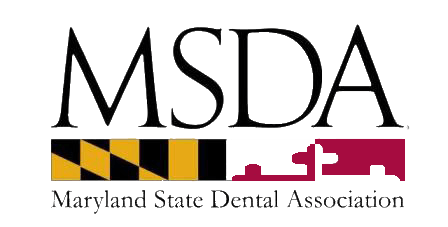Gum Disease & Lanap In Columbia, MD
Request An Appointment Today!
Cosmetic Dentistry
Gum Disease & Lanap In Columbia, MD
Most people have heard that they should visit their dentist every six months for examinations & deep dental cleanings in Columbia, MD. They may not understand the importance both to their short-term and long-term oral health. Here’s a quick look at what this regular schedule of care can do for you.
Your mouth is warm and moist and continually provided with nutrients as you eat and drink. All these qualities mean that bacteria find your mouth a hospitable place to grow. When you brush your teeth, you are clearing out nutrients and bacteria that have already grown. In some out-of-the-way locations, however, bacteria and tartar build-up will continue to grow, leading to conditions like gingivitis despite your best efforts. And even in areas you can clean, some gradual accumulation of bacteria will still occur.
What Causes Gingivitis?
In general, gum disease is caused by the buildup of plaque and tartar on your teeth. When this starts to extend beneath your gum line, the germs trapped beneath your gums can lead to infection and require removal.
There are several factors that can increase your risk of developing gum disease. These include:
- Not brushing or flossing correctly
- Not brushing or flossing frequently
- Smoking or using tobacco products
- Having a weakened immune system
- Having a family history of gum issues
- Experiencing hormonal changes
- Having an impacted or partially-erupted tooth
- Having crooked teeth
It’s important to see a dental professional to get your gum disease treated before it develops into a more serious problem and affects your gum tissue and teeth. Call us at
(410) 730-6460 to schedule your periodontal appointment at our Columbia, MD, office today.
Patient Results With LANAP
How Do You Treat Gum Disease?
So far, we have mentioned everything you need to know about what gum disease is, how to recognize it, and why you should get it treated right away. Now it’s time to go over the two main ways your dental professional can treat your gum disease and which one we recommend at Smile Savers.
Traditional Periodontal Disease Treatments
Periodontitis is a very widespread problem. Until recently, the usual treatment for periodontitis involved antibiotics, deep cleanings and even gum surgery, which can be quite painful. In fact, despite the fact that these procedures can be necessary to prevent the loss of one’s teeth, they are often so painful that patients avoid them—causing the gum disease to progress even further. The use of dental laser assisted technologies is transforming the approach to treatment, making it more tolerable for patients.
However, at Smile Savers Dentistry, Dr. Daniel Stewart has found a much better way to help his patients with gum disease. Called “LANAP,” this laser treatment utilizes cutting-edge technology to treat gum disease without the painful effects of previous methodologies. Pioneering the frontier of periodontal health, the LANAP protocol - a laser periodontitis treatment - stands as the first and only regimen of its kind to garner FDA clearance, rapidly becoming a favored selection among discerning dental professionals.
About LANAP Gum Disease Treatment
Smile Savers Dentistry is one of the few practices in the Columbia, Maryland area that offers LANAP (short for “Laser-Assisted New Attachment Procedure”). By passing the laser over the inner surface of the gum pockets, diseased tissue is destroyed so it can be replaced by new, healthy tissue. This new tissue will securely reattach itself to the surface of the tooth, eliminating the empty pocket entirely.
There’s very little trauma to the gums, so healing is much faster than with gum surgery and there is no need for sutures. If you have been told that you suffer from periodontitis, call us to find out if you are a candidate for LANAP treatment. This is a totally different experience than any previous periodontal treatments you’ve had.
- Minimally invasive procedure
- Incredibly accurate laser technology
- Faster healing time
- Stimulates new bone growth
- Stimulates new gum tissue growth
- No stitches needed
- Less bleeding and swelling of gums after LANAP, promoting smoother post-op experiences
- Improves oral health
- Much more comfortable than traditional treatment
Gingivitis and Periodontitis
LANAP Frequently Asked Questions
Where Do I Find a LANAP Clinician?
What to Expect During LANAP
LANAP and Invisalign
Who Can Benefit From LANAP?
What is the cost of LANAP?
Common Questions About LANAP
Why Choose Smile Savers for Gum Disease Treatment with LANAP?
Dr. Daniel Stewart founded Smile Savers to offer one-of-a-kind service to our neighbors in Columbia, MD, and the surrounding communities. Whether you need gum disease treatment, dental implants, or a simple cleaning, our caring team will be here for you every step of the way.
It’s because Doctor Stewart cares about your comfort and oral health that he invested in the LANAP machine for treating gum disease. For over 30 years, our mission has been to provide the best dental care in Maryland, and we work hard for you to live up to that ideal.
If you have gingivitis or periodontitis, call Smile Savers to schedule an appointment with our experts. You deserve a healthy smile, and we’ll help you achieve it!
Call us at
(410) 730-6460 today.
Contact Us
Smile Savers is accepting new patients however, we DO NOT accept HMO's, Medicaid, or other State Insurance Programs. If you require financial assistance please contact our office regarding our membership plan and financing options.









